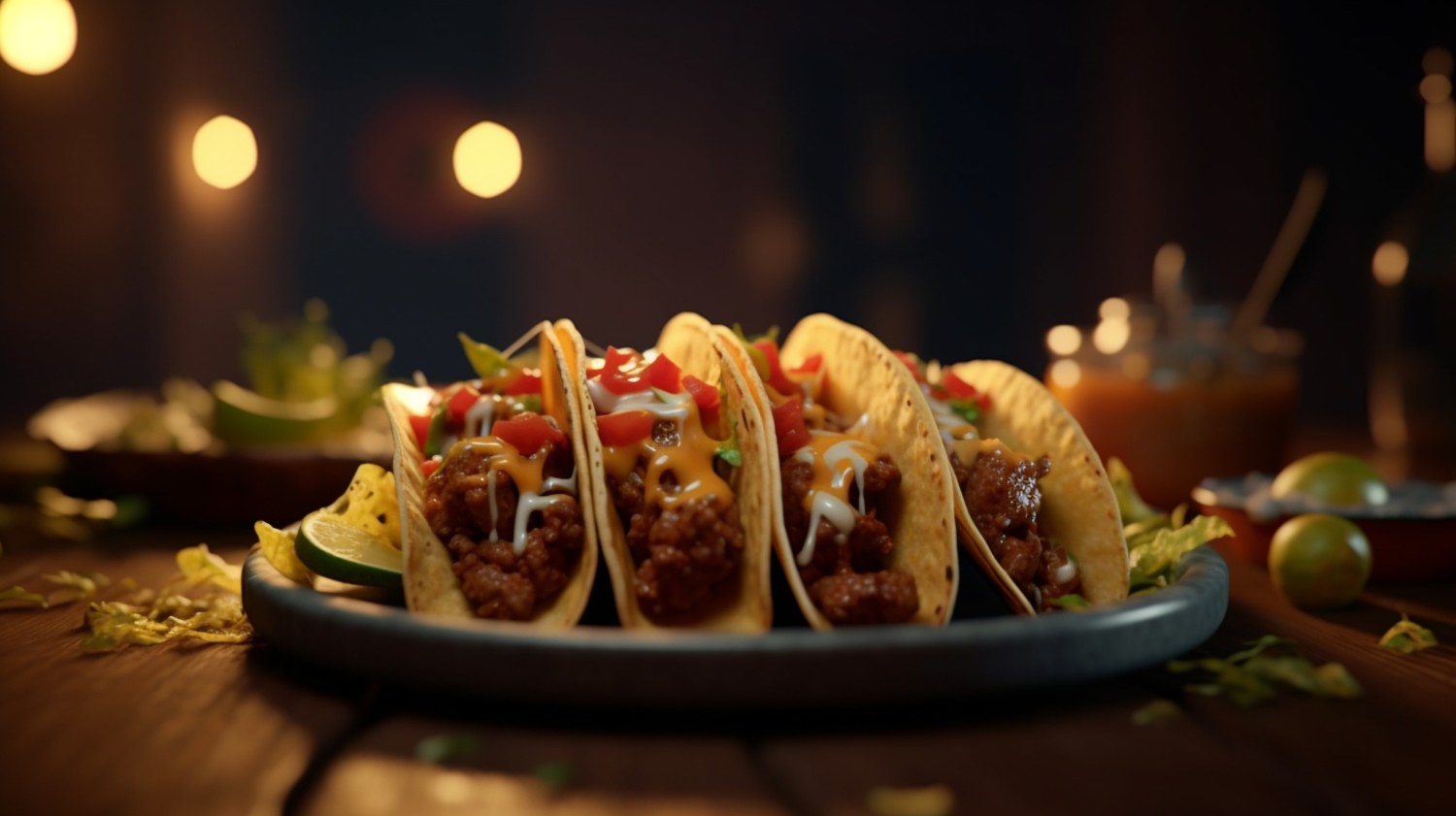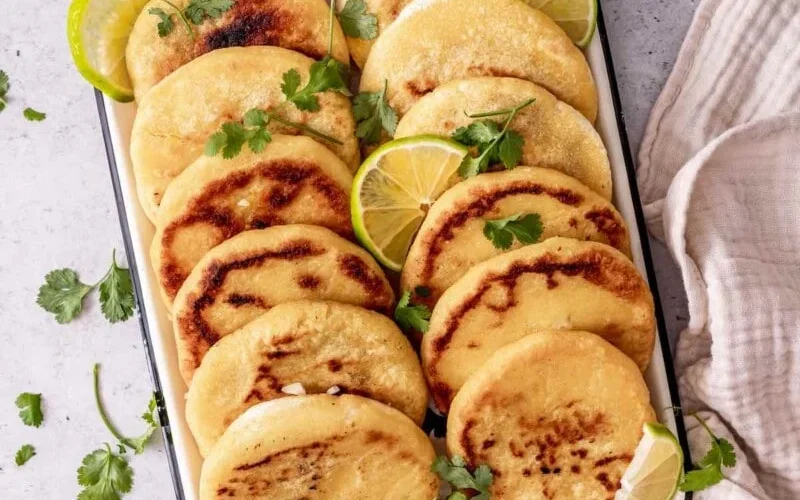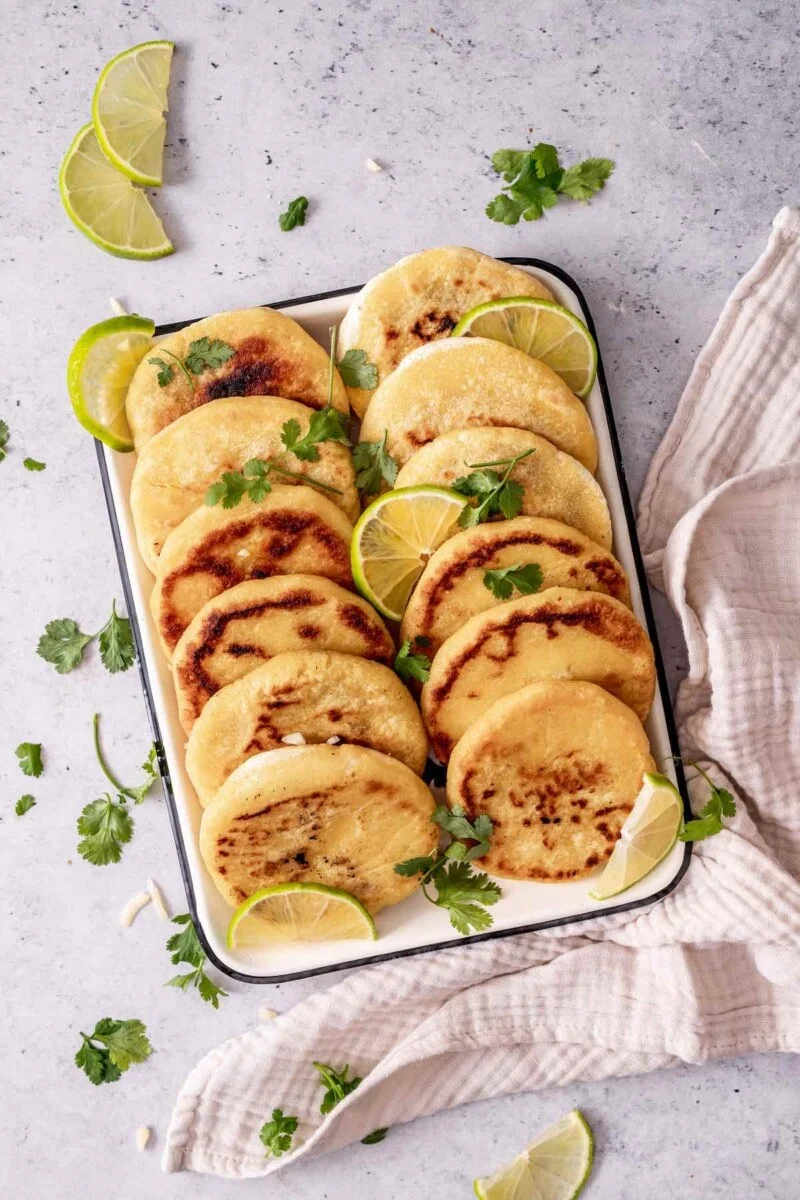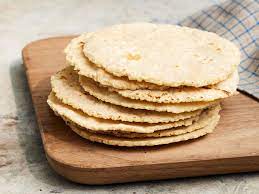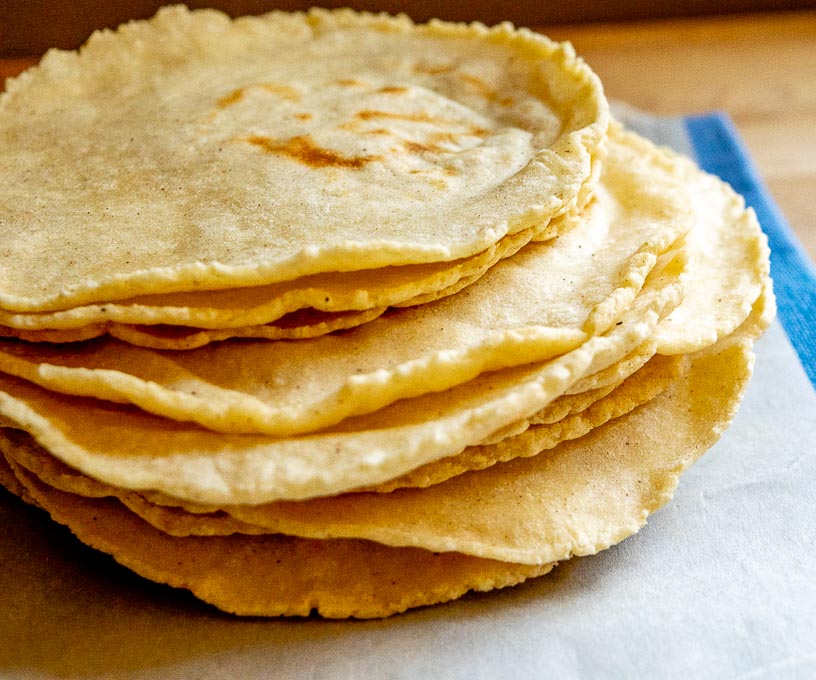What’s the difference between tortillas and pupusas? Do they look the same?
What sets tortillas apart from pupusas? Both are popular staples in Latin American cuisine, but they have distinct characteristics.
Tortillas, originating from Mexico, are flat, round unleavened breads made primarily from corn or wheat flour. They are versatile, often used as wraps or side dishes.
In contrast, pupusas hail from El Salvador and are thicker, stuffed cornmeal cakes filled with various ingredients such as cheese, beans, or meat.
While they may appear similar at first glance due to their round shape, their textures and preparation methods differ significantly, showcasing the unique culinary traditions of their respective countries.
Here what’s the difference between huaraches and talcoyos?
What’s the difference between tortillas and pupusas? Do they look the same?
What is the dish called pupusa from El Salvador, and what is its origin?
What is Tortillas?
What is pupusa?
Basics difference between tortillas and pupusas
Here’s a table outlining the basic differences between tortillas and pupusas:
| Aspect | Tortillas | Pupusas |
|---|---|---|
| Origin | Common in Mexico and Central America | Traditional dish from El Salvador |
| Ingredients | Made from corn masa or wheat flour | Made from corn masa (nixtamalized corn) |
| Thickness | Thin and flat | Thicker and often puffed due to filling |
| Preparation | Cooked on a griddle (comal) | Stuffed with ingredients and then cooked |
| Common Fillings | Typically served plain or as wraps | Filled with cheese, beans, or pork |
| Serving Style | Used as a side or base for various dishes | Served as a main dish with curtido and sauce |
| Texture | Soft and pliable | Crispy on the outside, soft inside |
This table highlights the key differences in origin, preparation, and usage between tortillas and pupusas.
What is the taste of Tortillas?
What is the taste of Pupusas?
What’s the difference between tortillas and pupusas? Do they look the same?
How much time it take to make tortillas
How much time it take to make pupusas
What’s the difference between tortillas and pupusas? Do they look the same?
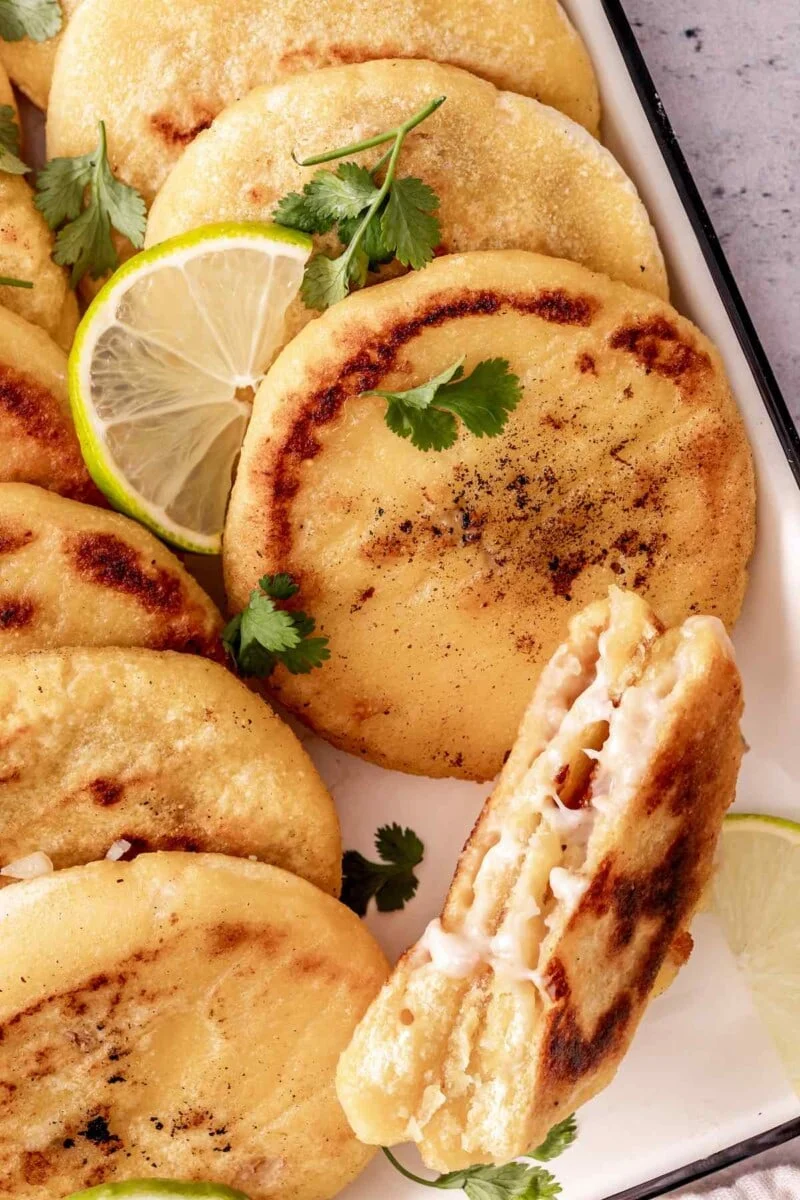
How to make tortillas?
Here’s a step-by-step guide on how to make tortillas from scratch, along with the ingredients you’ll need.
Ingredients:
- 2 cups masa harina (corn flour)
- 1/2 teaspoon salt (optional)
- 1 1/4 cups warm water (more if needed)
Instructions:
Step 1: Prepare the Dough
- Mix Dry Ingredients: In a large bowl, combine 2 cups of masa harina and 1/2 teaspoon of salt (if using).
- Add Water: Gradually add 1 1/4 cups of warm water to the masa harina mixture.
- Knead the Dough: Use your hands to mix until a soft dough forms. Knead the dough for about 2-3 minutes until it is smooth and pliable. If the dough feels dry, add a little more water; if it’s too wet, add a bit more masa harina.
Step 2: Rest the Dough
- Rest the Dough: Cover the dough with a damp cloth or plastic wrap and let it rest for about 15-20 minutes. This allows the dough to hydrate fully.
Step 3: Shape the Tortillas
- Divide the Dough: After resting, divide the dough into small balls, about the size of a golf ball (approximately 1.5 inches in diameter).
- Flatten the Balls: Use a tortilla press or a rolling pin to flatten each ball into a thin disc, about 6 inches in diameter. If using a rolling pin, place the ball between two pieces of plastic wrap or parchment paper to prevent sticking.
Step 4: Cook the Tortillas
- Preheat the Comal: Heat a cast-iron skillet or griddle (comal) over medium-high heat until hot.
- Cook the Tortillas: Place one flattened tortilla on the hot skillet. Cook for about 1 minute, or until the edges begin to lift and the bottom has light brown spots. Flip the tortilla and cook for an additional 30 seconds to 1 minute. The tortilla should puff slightly and have light brown spots on both sides.
- Keep Warm: Remove the cooked tortilla from the skillet and keep it warm by wrapping it in a clean kitchen towel. Repeat with the remaining dough balls.
Step 5: Serve
- Enjoy: Your homemade tortillas are now ready to be served! They can be used in a variety of dishes, such as tacos, enchiladas, or simply enjoyed with butter or salsa.
Tips:
- For best results, use masa harina specifically labeled for tortillas, as it contains the right starch content for a good texture.
- Keep the tortillas covered with a towel as you cook to prevent them from drying out.
- If you want to make wheat tortillas, simply substitute the masa harina with all-purpose flour and follow a similar process, adjusting the water as needed.
Enjoy your homemade tortillas.
How to make pupusas?
What’s the difference between tortillas and pupusas? Do they look the same?
Which one should you choose?
What’s the difference between tortillas and pupusas? Do they look the same?
Where to find both dishes?
What’s the difference between tortillas and pupusas? Do they look the same?
You can find both tortillas and pupusas in various settings, depending on your location. **Tortillas** are widely available at grocery stores, especially in areas with a significant Latino population.
Look for them in the international aisle or the bread section.
Many supermarkets also carry fresh tortillas from local vendors. Additionally, you can find them at Mexican restaurants, where they are often served with various dishes like tacos and enchiladas.
**Pupusas**, being a traditional Salvadoran dish, are best found at Salvadoran restaurants or food trucks. These establishments typically offer a variety of pupusas with different fillings, served alongside curtido and salsa.
In larger cities, you may also find pupusa-specific eateries that focus solely on this dish. Additionally, some farmers’ markets or food festivals may feature local vendors selling pupusas.
For homemade options, you can buy the ingredients at Latin markets or grocery stores to prepare them yourself.
Is masa for tortillas the same as masa for Pupusas?
Yes, masa for tortillas and masa for pupusas is essentially the same, as both are made from masa harina, which is a type of corn flour.
Masa harina is produced from dried corn that has been nixtamalized, a process where the corn is soaked in an alkaline solution, usually limewater. This process enhances the flavor, nutritional value, and digestibility of the corn.
However, there is a slight distinction in how the masa is used for each dish. For tortillas, the masa is typically mixed with water and formed into thin discs, resulting in a soft, flexible tortilla.
For pupusas, the masa is also mixed with water but is often slightly thicker to accommodate the fillings, creating a sturdier dough that can be shaped and sealed around various ingredients.
In summary, while the base masa is the same, the preparation and application differ between tortillas and pupusas.
What is the difference between Mexican Flour Tortilla and Indian Chapathi?
What’s the difference between tortillas and pupusas? Do they look the same?
Mexican flour tortillas and Indian chapathi are both unleavened flatbreads but differ in ingredients, preparation, and texture.
Here, what’s the difference between sopes and arepa?
**Ingredients:**
– **Flour Tortillas:** Made primarily from all-purpose flour, water, and salt. Some recipes may include fat, such as lard or oil, for added richness.
– **Chapathi:** Made from whole wheat flour (atta), water, and salt, resulting in a more nutritious option due to the higher fiber content.
**Preparation:**
– **Flour Tortillas:** The dough is typically rolled out into thin discs and cooked on a hot griddle (*comal*). They can be slightly thicker and may have a softer texture, especially if fat is added.
– **Chapathi:** The dough is rolled into thin discs and cooked on a hot skillet (*tava*). Chapathis are often puffed during cooking, resulting in a slightly chewy texture.
**Usage:**
– Both breads serve as accompaniments to various dishes, but tortillas are often used for wraps and tacos, while chapathi is commonly paired with curries and vegetables.
Why do tortillas taste better in Mexico?
What’s the difference between tortillas and pupusas? Do they look the same?- You see?
Tortillas often taste better in Mexico due to several key factors. First, **freshness** plays a significant role; many Mexican tortillerías produce tortillas daily using traditional methods, ensuring they are served warm and fresh.
The use of **masa harina** made from locally sourced corn, often nixtamalized in-house, enhances the flavor and texture, giving them a distinct taste that reflects the region’s agricultural heritage.
Second, **technique** is crucial. Skilled artisans prepare the dough and cook the tortillas on a *comal*, which contributes to a unique, slightly charred flavor and a perfect texture.
Additionally, the **cultural significance** of tortillas in Mexican cuisine leads to a focus on quality and tradition. They are made with care, often accompanying traditional dishes that elevate their overall taste experience.
Finally, the use of locally sourced ingredients in accompanying salsas and dishes further enhances the flavor profile, making the entire meal more enjoyable.
Related faq’s
What is the difference between a tortilla and a pupusa?
The main difference between a tortilla and a pupusa lies in their preparation, thickness, and purpose.
**Tortillas** are flatbreads made primarily from masa harina (corn flour) or wheat flour. They are typically thin and versatile, serving as a base or wrap for various dishes like tacos, burritos, and enchiladas. Tortillas are cooked on a hot griddle (*comal*) until soft and pliable.
**Pupusas**, on the other hand, are a stuffed version of tortillas, originating from El Salvador. They are made from masa harina as well but are thicker and filled with a variety of ingredients, such as cheese, beans, or pork. After being stuffed, pupusas are cooked on a griddle until they develop a crispy exterior while remaining soft inside.
While both are essential staples in Latin American cuisine, tortillas are used primarily as wraps or sides, whereas pupusas are hearty main dishes with flavorful fillings.
Can you use a tortilla press for pupusas?
Yes, you can use a tortilla press to make pupusas, and it can be a helpful tool for achieving even thickness.
A tortilla press, typically made of cast iron or wood, allows you to flatten the dough balls into uniform discs easily.
To use a tortilla press for pupusas, start by dividing your masa dough into small balls, about the size of a golf ball.
Place one ball between two pieces of plastic wrap or parchment paper to prevent sticking. Then, press down on the tortilla press to flatten the dough into a disc, about 4-5 inches in diameter.
After flattening, carefully remove the disc and add your desired filling to the center.
Fold the edges over the filling, seal it, and gently reshape it into a disc before cooking. While a tortilla press is not mandatory, it can simplify the process and help achieve a consistent thickness for your pupusas.
What food looks like pupusas?
Pupusas resemble several other stuffed flatbreads from various cuisines, making them a unique yet familiar dish. One similar food is **arepas**, a traditional dish from Venezuela and Colombia.
Arepas are also made from corn dough, filled with various ingredients like cheese, meats, or avocados, and cooked until golden brown.
Another comparable dish is **tortas de maíz**, which are Mexican corn cakes that can be stuffed with similar fillings and cooked on a griddle.
Additionally, **empanadas** are pastry pockets, often filled with meat, cheese, or vegetables, though they have a flaky crust instead of the corn dough used for pupusas.
**Sopes** and **tamales** can also be visually similar in some contexts, with their round shape and use of corn masa, though their preparation and texture differ significantly.
Here, how are pupusa different from gorditas?
Overall, while these foods share similarities, pupusas maintain a distinctive texture and flavor due to their unique preparation and fillings.
What is the Mexican version of a pupusa?
The Mexican version of a pupusa is known as a **gordita**. Gorditas are thick corn tortillas that are typically stuffed with various fillings, similar to pupusas. However, the preparation and presentation differ slightly.
To make gorditas, masa harina is mixed with water and salt to form a dough, which is then shaped into thick discs.
Instead of being cooked flat like tortillas, gorditas are cooked on a hot griddle (*comal*) and can be sliced open or stuffed with ingredients like cheese, beans, chicharrón, or various meats.
Unlike pupusas, which are sealed around the filling before cooking, gorditas can be filled after cooking, allowing for a more open sandwich-like structure.
They are often served with salsas, crema, and other accompaniments. While both dishes share a common heritage of corn-based dough, the gordita stands out as a delicious Mexican alternative to the Salvadoran pupusa.
Conclusion
What’s the difference between tortillas and pupusas? Do they look the same?- As you have seen so far
In conclusion, tortillas and pupusas are distinct culinary creations that, while both made from masa harina, serve different purposes and exhibit unique characteristics.
Tortillas are thin, versatile flatbreads used as wraps or sides in various dishes, while pupusas are thicker, stuffed tortillas filled with a variety of ingredients, making them heartier main dishes. Although they share a similar base, their preparation, thickness, and usage set them apart.
Visually, tortillas are usually uniform and flat, while pupusas have a thicker, often slightly bulging appearance due to their fillings. Both are delicious representations of their respective culinary traditions.
